Latin name: Sedum
Category: Perennial Succulent Plants
Birthplace: Mexico, Guatemala
Modest Sedum - durable and unique rugs
The genus Sedum, or stonecrop - a numerous unique association of more than five hundred varieties of succulent, annual, biennial and perennial herbaceous plants, tropical and frost-resistant, evergreen and withering with the onset of frost, miniature ground covers, low shrubs and semi-shrubs located in the bearberry family .
The careful work of taxonotomists led to the pision of the genus Sedum. In one thousand nine hundred and seventy-seven, thanks to the botanist from Japan, Hideaki Ohbi, an interesting genus of Ochitniki (Hylotelephium) was organized, collected from twenty-eight varieties transferred from the genus Sedum of perennial herbaceous succulent crops.
This was served by a more detailed study of the morphological characteristics of plants. Not all scientists have approved this organization of a new kind, and they classify Ochitniki, as before, Ochitniki. Undoubtedly, a lot of work on this issue will be carried out by geneticists.
The main thing is that these plants are loved by flower growers and are widely used both at home and in gardens. Sedums are flowers in a modern interior. Stonecrops perfectly plant roofs, decorate rock gardens, flower beds, potted gardens.
The stonecrop flower considers Mexico and Guatemala to be its homeland. Europe, East Asia, North America admire the beauty of this amazing culture. The northern part of the globe, with its climatically temperate conditions, makes it possible for the sedum to feel wonderful in nature without outside human help. Some varieties of stonecrop can be found in the southern part of the earth.
The scientific name of the family affiliation, when translated from the Latin "Sedeo", means to sit. Indeed, plants tend to cling to the ground and even grow on any rocky areas, attaching to them. The Germans call stonecrop "fat leg" for having fleshy leaf plates that perfectly accumulate liquid and feel very comfortable in dry, hot conditions. There are popular names - hernia grass, fever grass, creaker, hare cabbage.
It is not for nothing that such folk names are inherent in the plant. After all, sedum is not only handsome and looks great in cultural plantations, but also has useful healing properties, which were noticed in ancient times. Folk medicine widely uses the leaf plates of the creaker, as well as all its parts up to the rhizomes.
The plant heals wound surfaces well and is an effective remedy for burns, insect bites, corns, warts.
An infusion of sedum roots was used to strengthen the immune system, treat oncological diseases, and strengthen male strength - after all, it really “rejuvenated”. Succulent fleshy leaves, their life-giving juice is used in the treatment of skin diseases, infusions and decoctions treat fractures, dislocations, bruises, diseases of the stomach and intestines, hepatitis, heart disease and the nervous system.
Scientific medicine did not stand aside. A thorough study of the merits and qualities of stonecrop revealed its possession of biostimulating medicinal properties, exceeding even aloe in quality. The basis of the biostimulating drug Biosed is the herb sedum. Grass and roots of stonecrop purple are rich in carbohydrates: glucose, fructose, sucrose, sedoheptulose; organic acids: oxalic, succinic, malic, fumaric, glycolic; essential oils and alkaloids: sedamin, sedinin, methylisopeltierine, nicotine, phenols, coumarins, vitamins.
Healing healing properties are also possessed by such plants as the fat woman, Kalanchoe, chlorophytum.
Sedums are very perse plants. They can make up two large groups: the first do not impose requirements on the state of the substrate - these are mainly cultures representing undersized rugs. Stonecrops ground cover form thickets closer to the soil; the second - they want to grow on nutritious loams, they are represented by tall forms, expanding extensively, they become loose thickets with bright and abundant flowering.
These unique plants have alternate, opposite or whorled, whole-cut or serrated leaf blades of various configurations, sizes and colors, which often form rosettes. Flowers are collected in umbellate apical inflorescences, they are also solitary, axillary, bisexual. They are yellow, white, red, blue.
Sedums - perennial flowers for summer cottages are unpretentious and hardy in all respects, open ground is perfect for them. Ground cover varieties with their magnificent rugs of different colors can be admired during the warm season. Ground cover sedum looks great in rockeries, gravel gardens, alpine slides. Tall varieties decorate flower beds, flower beds, borders.
In room conditions, these wonderful succulents do not particularly indulge in flowering due to lack of sunlight. To do this, it is necessary to make efforts and create conditions close to natural.
Hanging vases with a stonecrop in the form of an ampelous plant look gorgeous.
Compositions with graptopetalum, aeonium, zamiokulkas, dieffenbachia, rebutia will look great.
Sedum photo can be seen when getting acquainted with interesting and charming flower varieties.
Sedum species
Sedum Steel (Sedum Stahlii)
 Mexico is considered the birthplace of this large herbaceous perennial. Natural conditions allow this miracle to reach a height of twenty meters. There is no special branching of the straight stem in the culture. It is decorated with small, up to one centimeter, plump, slightly pubescent, brownish-red ovoid leaves. A branched peduncle presents paniculate inflorescences with yellow flowers. Flowering pleases at the end of the summer period with the onset of autumn. A very popular variety in indoor floriculture.
Mexico is considered the birthplace of this large herbaceous perennial. Natural conditions allow this miracle to reach a height of twenty meters. There is no special branching of the straight stem in the culture. It is decorated with small, up to one centimeter, plump, slightly pubescent, brownish-red ovoid leaves. A branched peduncle presents paniculate inflorescences with yellow flowers. Flowering pleases at the end of the summer period with the onset of autumn. A very popular variety in indoor floriculture.
Sedum Daiphyllum (Sedum Dasyphyllum)
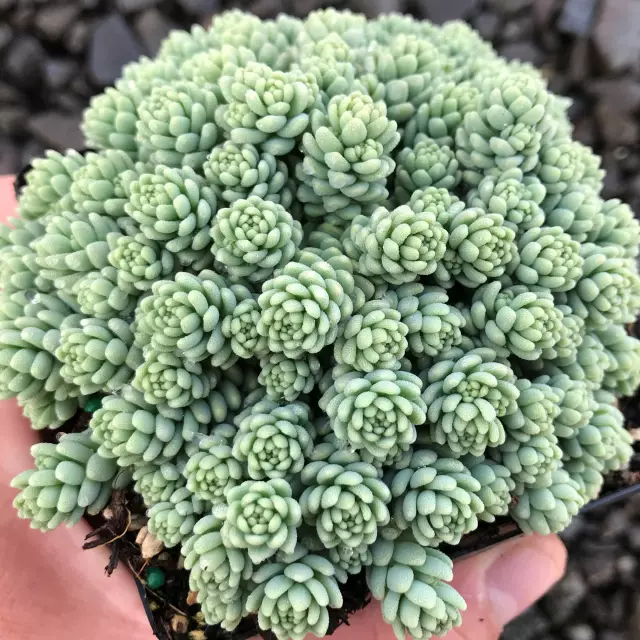 Mediterranean territories are very suitable in climate for this ground cover sedum. This small perennial thrives on rocks. Creeping stems with a diameter of five millimeters with oppositely located spherical, bluish millimeter leaves densely cover the territory with carpet thickets up to eight centimeters high. With the onset of summer, it blooms with white flowers with a black dot. Elegantly decorate rocky and succulent gardens, alpine slides. It looks original among beautifully laid out stones and tiles.
Mediterranean territories are very suitable in climate for this ground cover sedum. This small perennial thrives on rocks. Creeping stems with a diameter of five millimeters with oppositely located spherical, bluish millimeter leaves densely cover the territory with carpet thickets up to eight centimeters high. With the onset of summer, it blooms with white flowers with a black dot. Elegantly decorate rocky and succulent gardens, alpine slides. It looks original among beautifully laid out stones and tiles.
Sedum Pachyphyllum
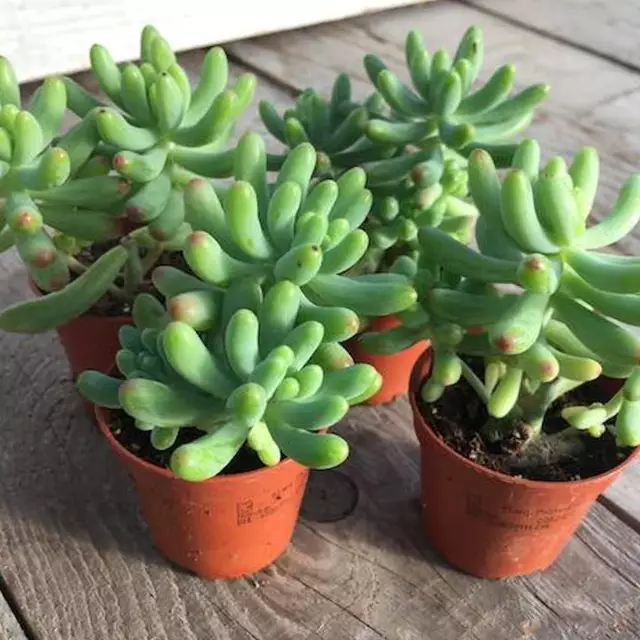 Mexican native plant. Represented by a thirty-centimeter, compact, upright bush. It is made up of woody, highly branched, erect stems that bend with age. Fleshy, juicy, densely arranged, silver-green leaves make the plant charming. Flowering pleases in the summer with yellow, sessile small flowers.
Mexican native plant. Represented by a thirty-centimeter, compact, upright bush. It is made up of woody, highly branched, erect stems that bend with age. Fleshy, juicy, densely arranged, silver-green leaves make the plant charming. Flowering pleases in the summer with yellow, sessile small flowers.
Sedum Mexican (Sedum Mexicanum)
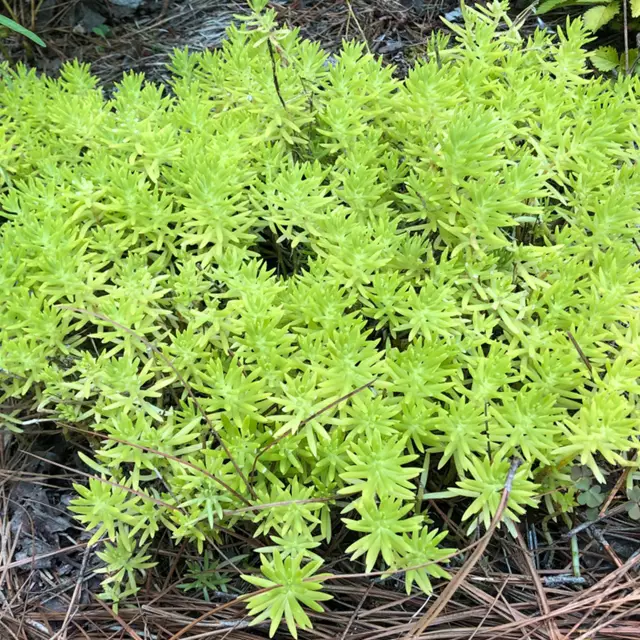 The variety is represented by a branching unpretentious ampelous plant with twenty-centimeter shoots in thin needle-shaped one-centimeter green leaves. Bright intense lighting helps them acquire a yellow color. Blooms with yellow flowers. The plant is shade-loving.
The variety is represented by a branching unpretentious ampelous plant with twenty-centimeter shoots in thin needle-shaped one-centimeter green leaves. Bright intense lighting helps them acquire a yellow color. Blooms with yellow flowers. The plant is shade-loving.
Sedum Adolf (Sedum Adolphii)
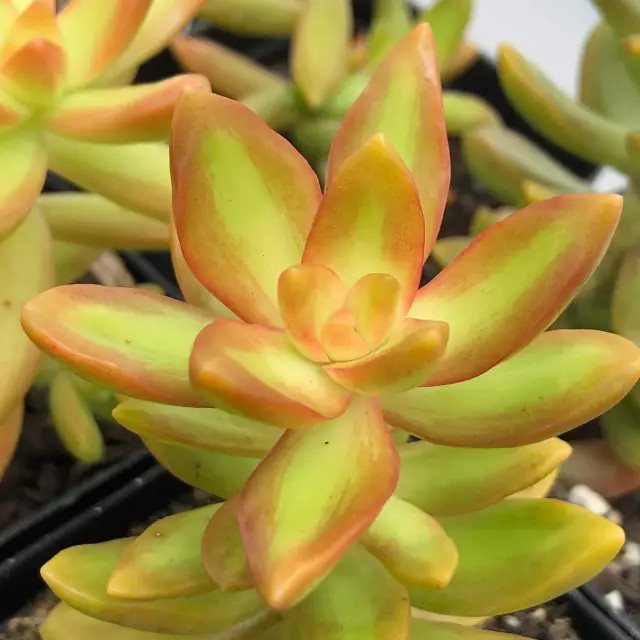 Originally from Mexico. A profusely branching shrub has a straight stalk a little more than one centimeter thick. Generously decorated with fleshy, strong, boat-shaped young green four-centimeter leaves. Older leaves become greenish-yellow with a pinkish color. White flowers are collected in hemispherical inflorescences.
Originally from Mexico. A profusely branching shrub has a straight stalk a little more than one centimeter thick. Generously decorated with fleshy, strong, boat-shaped young green four-centimeter leaves. Older leaves become greenish-yellow with a pinkish color. White flowers are collected in hemispherical inflorescences.
Sedum Rubrotinctum
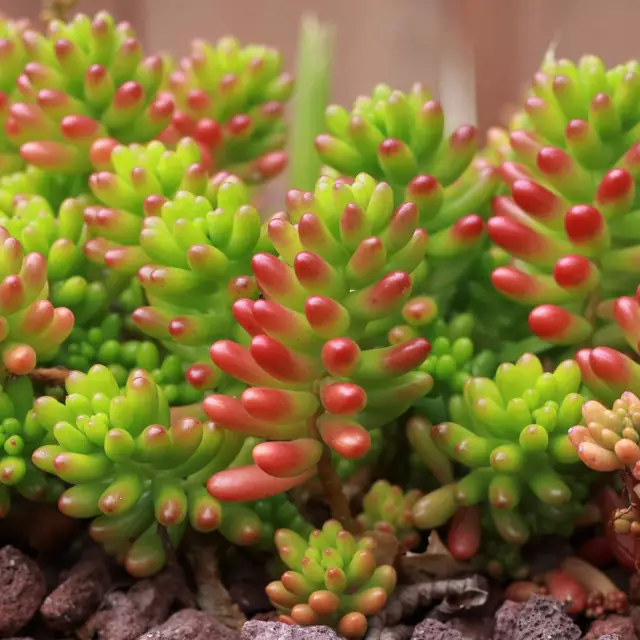 Sedum red-colored looks like a low bush with creeping shoots, slightly rising during growth. The apical rosettes are decorated with dark green leaf blades, which have a rounded shape and a slightly reddening top. Blooms bright red flowers.
Sedum red-colored looks like a low bush with creeping shoots, slightly rising during growth. The apical rosettes are decorated with dark green leaf blades, which have a rounded shape and a slightly reddening top. Blooms bright red flowers.
Sedum Nussbaumer (Sedum Nussbaumerianum)
 A bushy or herbaceous succulent plant, the stems are strongly branched and have a brownish-red tint. Thick leaves of a fleshy consistency reach a length of three centimeters. It blooms with star-shaped white flowers, single or collected in umbellate inflorescences.
A bushy or herbaceous succulent plant, the stems are strongly branched and have a brownish-red tint. Thick leaves of a fleshy consistency reach a length of three centimeters. It blooms with star-shaped white flowers, single or collected in umbellate inflorescences.
Sedum Prominent (Sedum Spectabile)
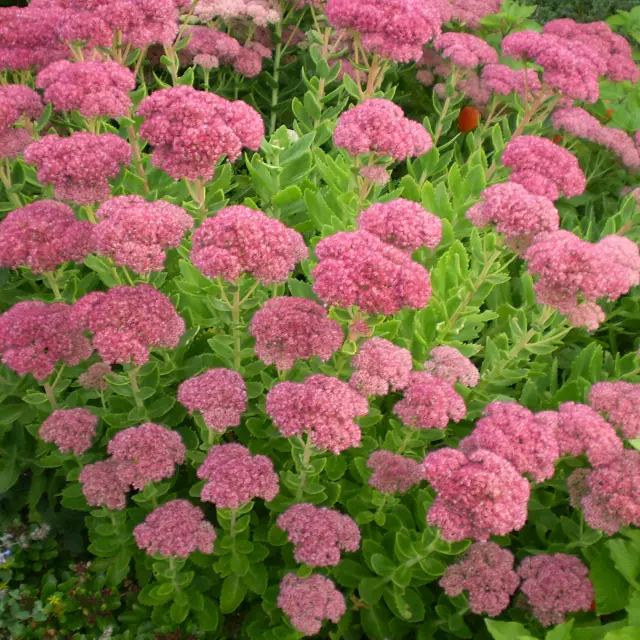 The prominent sedum considers China its northeastern part, Korea and Japan to be its homeland. It is frost-resistant and drought-resistant culture. Reaches up to eighty centimeters in height with large tuberous roots. It has the appearance of a compact bush. It blooms with small star-shaped flowers collected in umbellate inflorescences, the diameter of which reaches twenty centimeters.
The prominent sedum considers China its northeastern part, Korea and Japan to be its homeland. It is frost-resistant and drought-resistant culture. Reaches up to eighty centimeters in height with large tuberous roots. It has the appearance of a compact bush. It blooms with small star-shaped flowers collected in umbellate inflorescences, the diameter of which reaches twenty centimeters.
Sedum hibernates prominent in open areas.
The varietal variety of the prominent sedum is very large.
Sedum care at home
The ease of care of stonecrop is the main attraction of most of its varieties with different heights starting from ten centimeters and limited to a meter. The main asset of any sedum is its possible relocation from natural conditions, as a garden plant, to a beautiful flowerpot with constant cultivation in apartment conditions.
Choice of location and temperature
The best areas for a light-loving handsome man who loves to enjoy the bright sun and direct lighting will be windows facing south. Stonecrop will not refuse to place it on windowsills facing east or west. Sedum on the north window may lose its decorative qualities. In winter, the plant wants additional illumination with fluorescent lamps.
It is necessary to shade only too bright burning faces of the sun.
A pleasant summer range of temperature indicators will be a run-up of 25-28 ° С, and winter indicators - 9-13 ° С. The property of sedum is resistance to summer heat and winter cool air.
Regular airing will be useful for stonecrop.
Humidity and watering
The indoor succulent plant does not put forward special requirements for humidity indicators. Stonecrop perfectly adapts to any situation. The indoor plant will not refuse periodic spraying and rubbing the leaves for sanitary purposes. It is not advisable to increase the humidity level additionally.
Moderate and regular watering for sedum will be comfortable. The summer watering interval can be seven days, and the winter watering interval can be about fifteen days. Excess water in the pan should not stagnate.
The watering regulator is the top layer of a well-dried substrate.
Soil and its top dressing
A suitable soil mixture for sedum is easy to obtain at a flower shop designed for succulents. The substrate is inpidually prepared from equal parts of the following components: leafy soil, soddy soil and sand. If possible, you can prepare the following soil mixture: soddy soil, leafy soil, peat, coarse sand or perlite (2:2:2:3). There will be no extra addition of brick chips.
A good layer of drainage is a must.
During the period of active growth, stonecrop wants additional nutrition in the form of special fertilizers intended for cactus crops. The feeding interval is every thirty days.
Sedum transplant
Transplantation can only disturb plants that have grown strongly. Young bushes can be disturbed after two years, and adults - every four years. Carefully carry out transplantation by transshipment into a shallow flowerpot.
Sedum reproduction
How to propagate stonecrop? This procedure can be easily and simply performed using cuttings, both leaf and stem. Wet sand is very good for rooting cuttings. After rooting, seedlings must be planted in separate flowerpots and provided with bright diffused lighting.
The seed method is also acceptable for breeding sedum. We create mini-greenhouse conditions for the sown seeds in a leaf-sand mixture, we get sprouts in two weeks. Regular airing and spraying are required. Young seedlings should be ped into shallow flowerpots when two or three leaves appear on them. Blooming young stonecrop can be admired after three years.
Pests and diseases of sedum
A hardy and resilient houseplant with good care is not at all afraid of pests, but can still be attacked by mealybugs. The places of their dislocation can be the sinuses of the leaflets. If the manual method of cleaning pests does not lead to a positive result, the houseplant is urgently treated with insecticides.
Difficult Growing Moments
- The leaves become wrinkled and slightly lethargic - the substrate in the flowerpot is dry, it is necessary to adjust the watering.
- The root system of the plant rots - the room temperature is low, the soil mixture is too wet.
- The leaves on the stonecrop fall off - the cause may be a poor-quality transplant.
- Elongated stems with internodes - stonecrop lacks lighting.
An amazing blooming handsome man is suitable for all life situations. With its decorative appearance, it will decorate any interior.
To get acquainted with other indoor plants alphabetically on the site, you need to open the catalog of indoor plants from a to z.




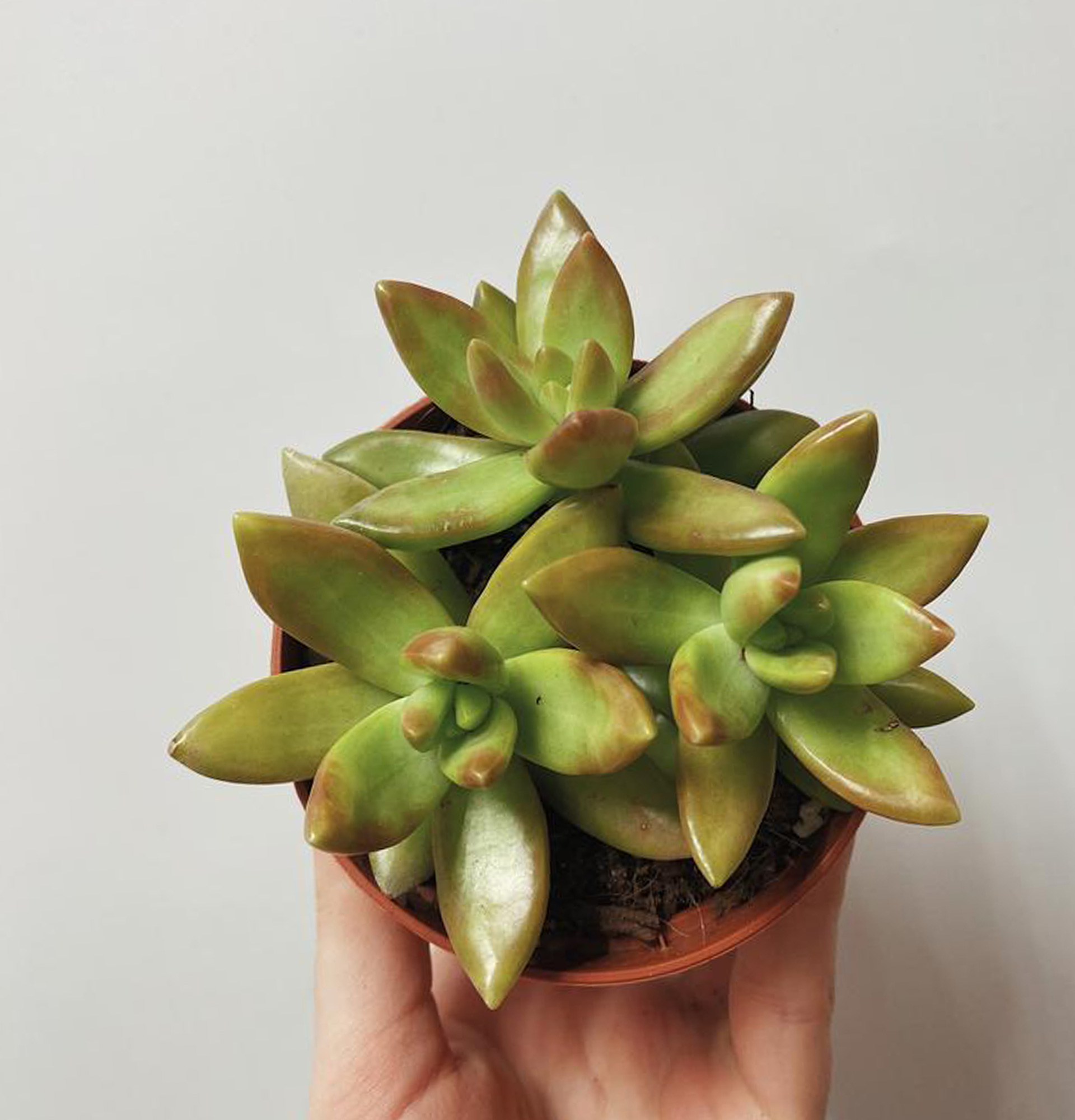










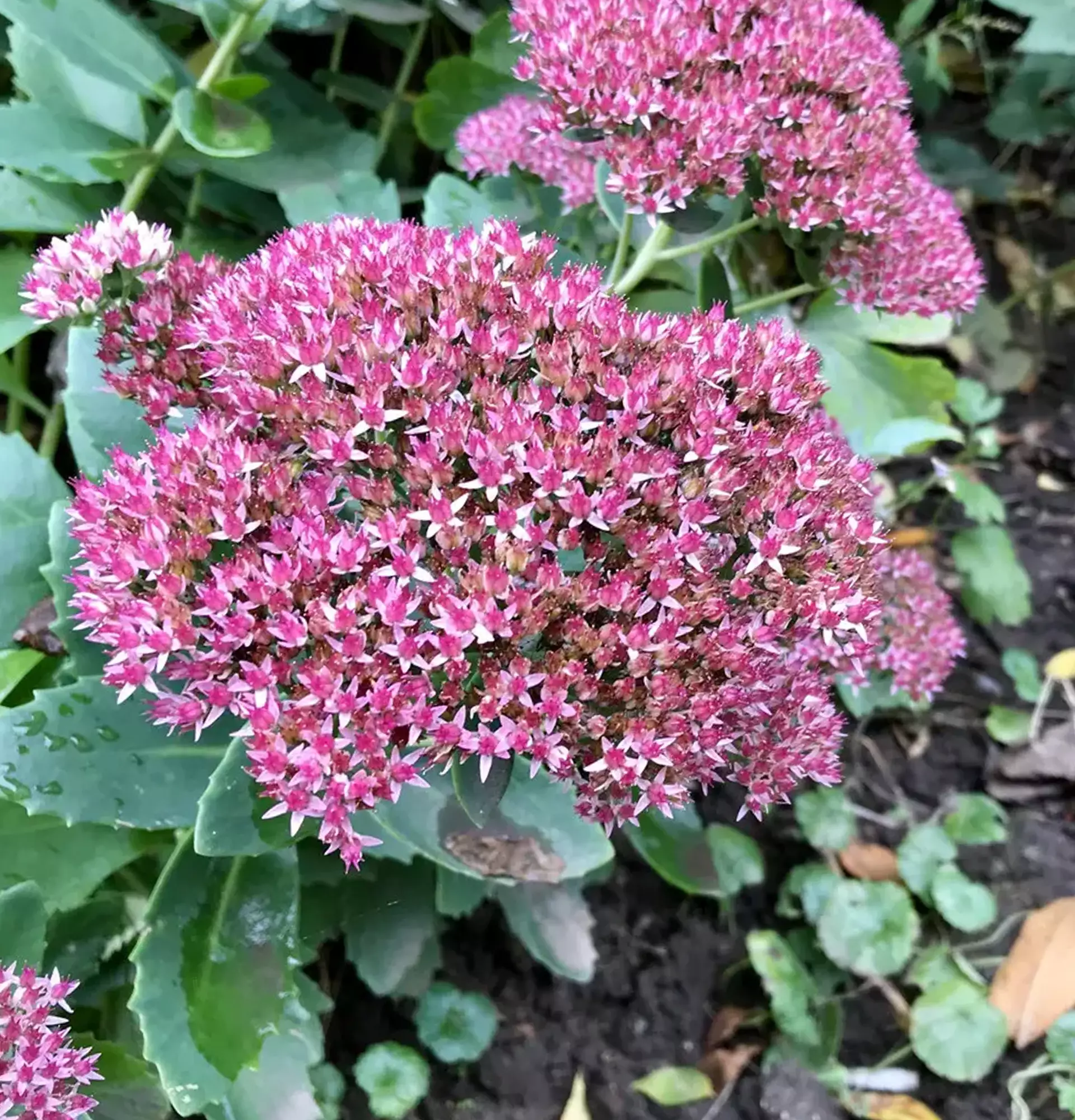

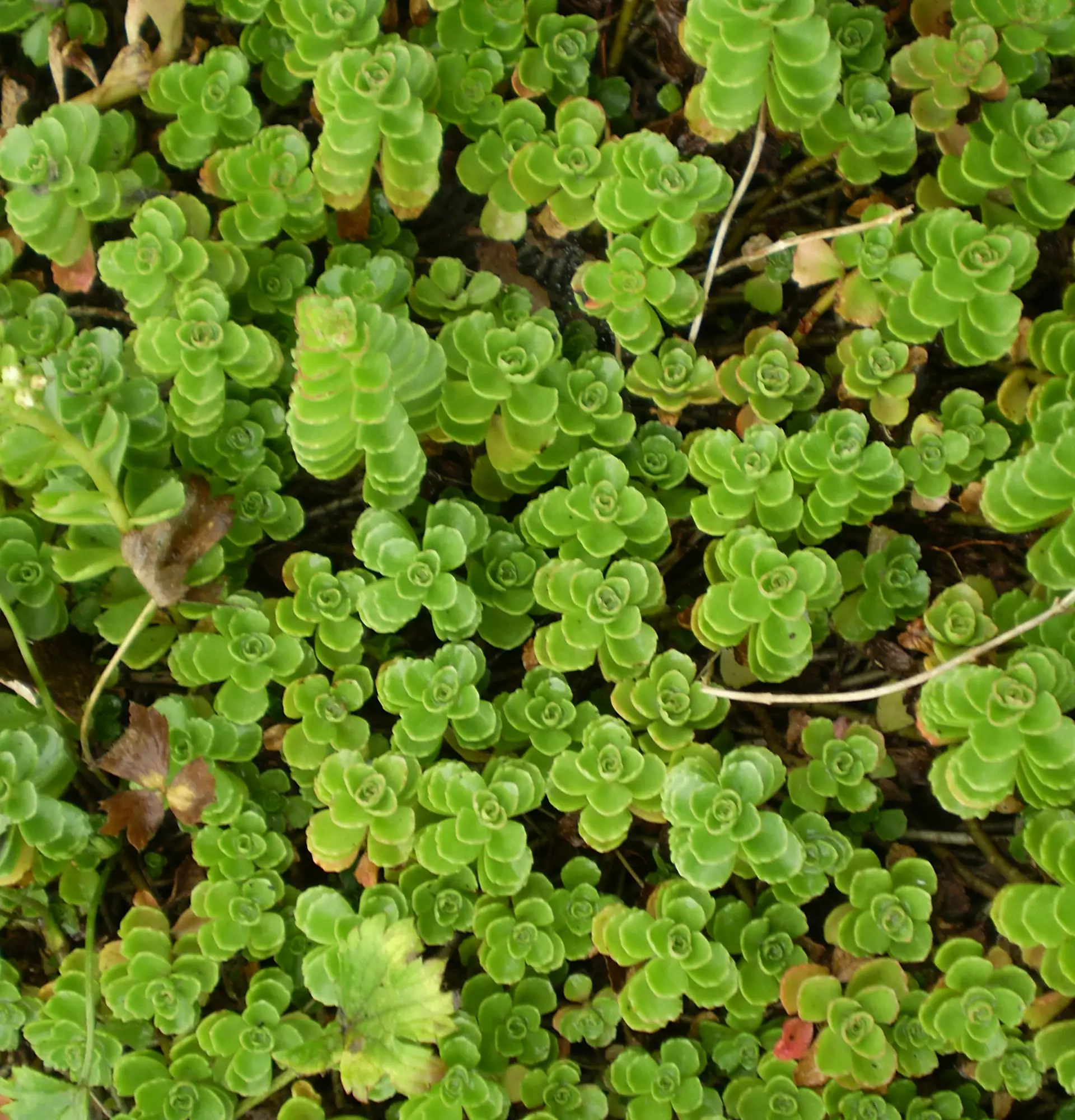
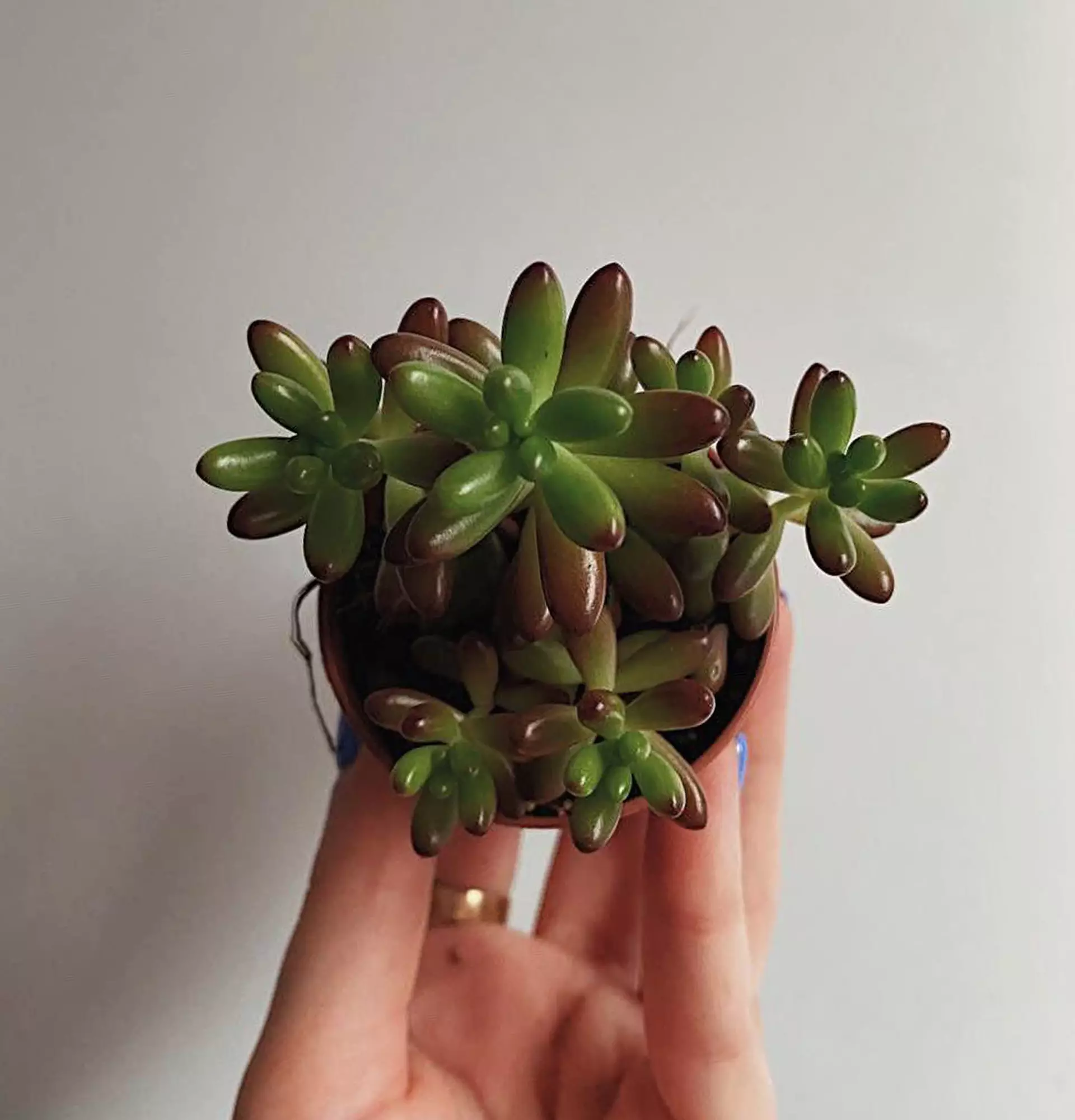

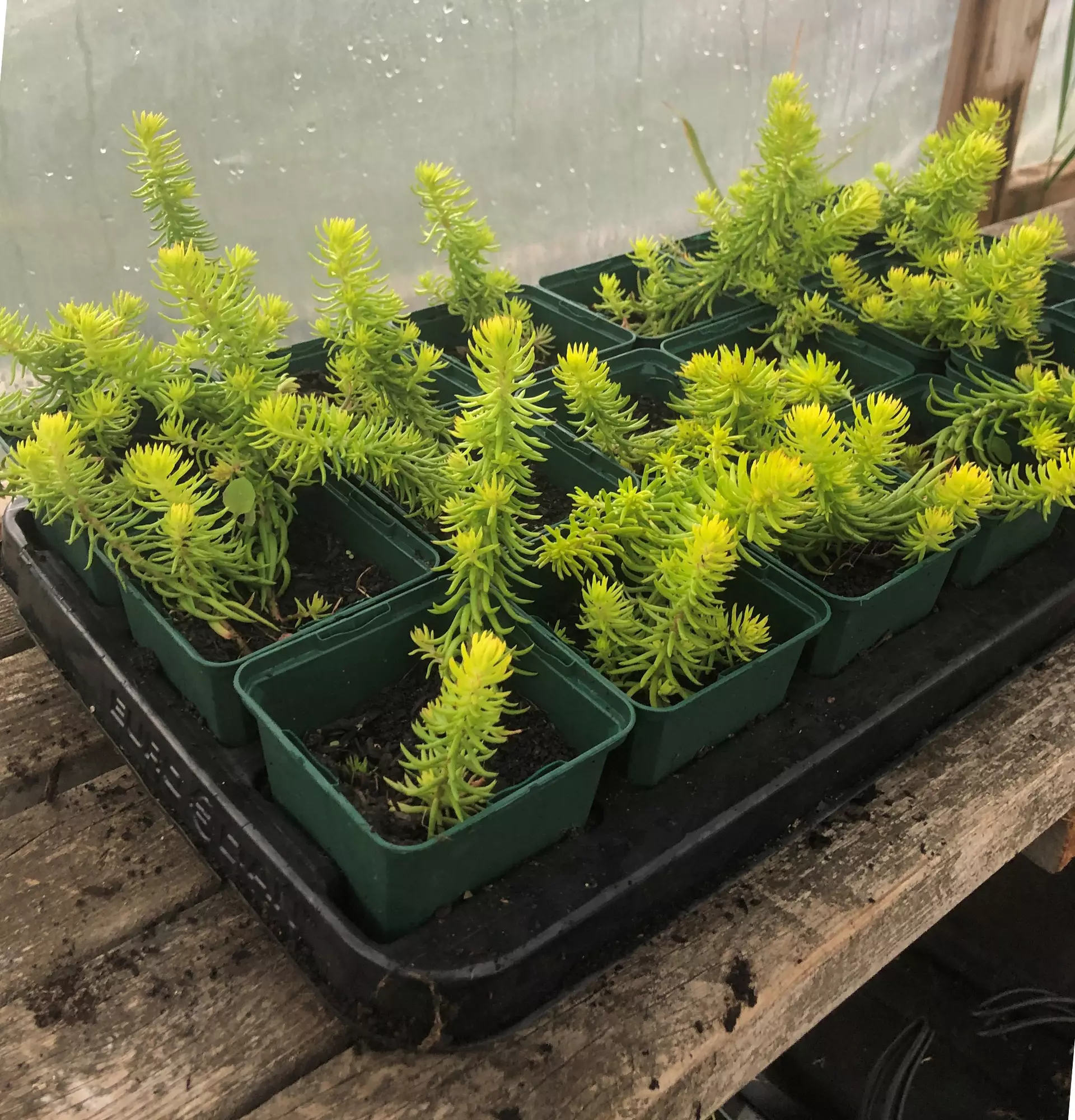
Write comments
Comments